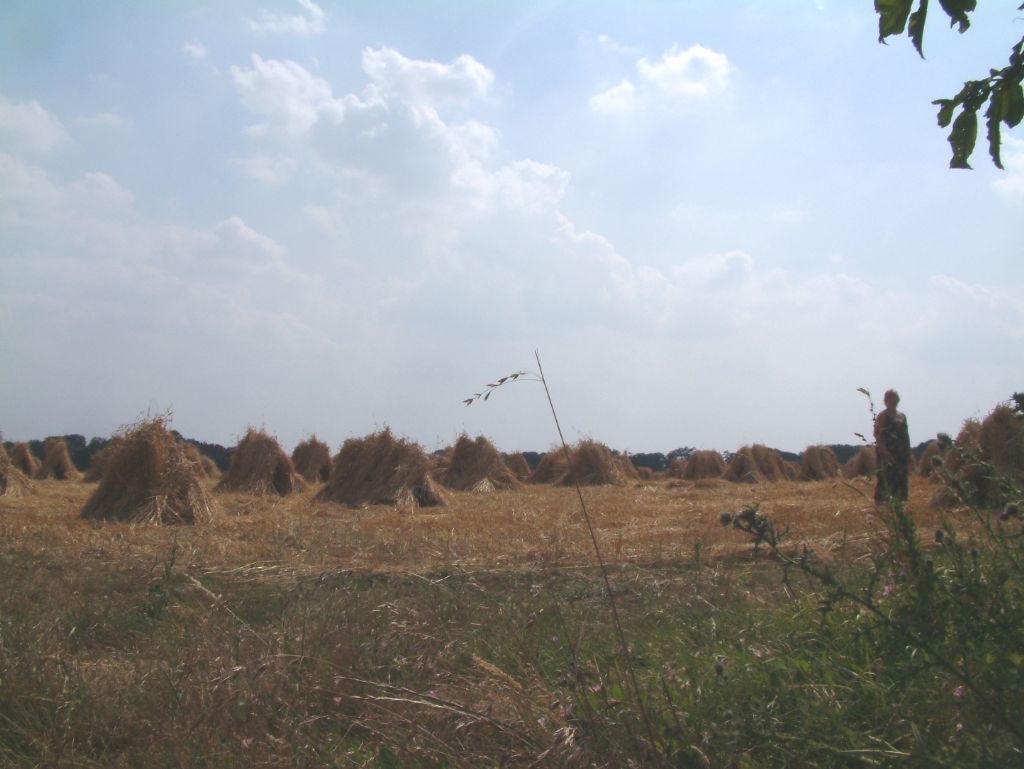Clive’s memories may be a liitle lost in the mists of time or only remembered from one large farm, I think.
The most common order of operations was cutting, stooking, collecting and placing in ricks, followed (often much later) by the arrival of the threshing machine.
Few farms would have had a threshing machine – the threshing would have been done by a contracting gang, moving from farm to farm. The ricks were often built on the ‘mushroom’ stones to keep the crop free from rat infestation before threshing could take place. I think I remember one such stack on the farm, but cannot be totally sure on that. I am now 70 and that was a home county small farm. I do not remember the threshing box, back in the early ‘50s.
The new cowshed was buit before I was school age – because I used to take the tea cans down to them on a regular basis (and I used to find the odd sixpence piece as they dug out the ground, by hand, for it. I did not realise it was a reward for my help!
Only the first farms on the contractor’s rota would have been able to feed straight from the field and that would have needed much more man-power than the norm.
Also, those sacks of corn were rather more than a hundredweight. I can assure you of that! Likely close to 1 1/2 cwt, if not more at times. Men were stronger back in those days – they had to be.
I don’t profess to know the actual dates of introduction of the pick-up balers in the UK, but our Massey Harris 701 arrived for either the 1951 or ‘52 haymaking season. I can remember a binder in one of our corn fields in about ‘52 or ‘53, but never saw it working. Afterwards, a contactor cut our crops for a few years with a 8’ cut Massey bagger combine, until Dad bought a second hand RSJ tractor driven 6’ cut in the late ‘50s. Even then, the sacks held over a cwt – or they were not filled enough – as they were hired from the local corn merchant or mill.
I expect many farms, particularly further north, were later in mechanising. I can remember I was well into my teens before one farm, we visited quite often, even got a grid electricity supply.
Farmboy.






